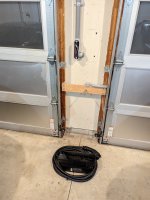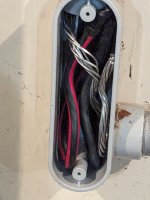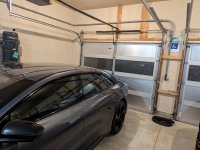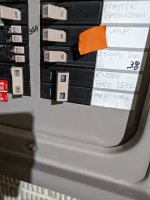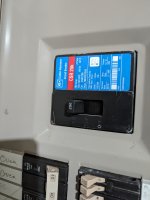FathomBlueStealt
New Member
- Joined
- Apr 12, 2024
- Messages
- 14
- Cars
- 2024 Lucid Air Touring
Hi guys, i'm looking for some guidance here.
I'm brand new to EVs, literally 1 week new, I received my Air Touring last week and I'm absolutely loving it so far!
I've read through as many of the charging threads as I could find, and perhaps I missed one that answers my question, but I'm interested in learning how to "swap in" a LHCS into a prior setup for a tesla wall connector. Fortunately, the previous owners of my home installed a 100A level 2 charger electrical conduit to the garage (along with solar panels with battery backup). The took the tesla connector when they moved, but the electrical conduit remains in placed.
I bought the LHCS, and I'll have an electrician do the work, but I want to educate myself enough to know that a) the work is done correctly, and 2) that I don't get ripped off.
The circuit breaker panel is rated at 200A. The EV Electrical conduit breaker is 100A.
I'm also curious if the conductor in the conduit meet the specs that Lucid has in the LHCS guide (2AWG, 90degree rating), would the electrician be able to determine this? Are the wires labeled (on the insulation) with their gauge/rating specs?
Finally, roughly, what do you think work like this should cost (rough estimates are fine, i know regional variations exist etc)?
I'll appreciate any and all help/guidance.
Many thanks in advance!
I'm brand new to EVs, literally 1 week new, I received my Air Touring last week and I'm absolutely loving it so far!
I've read through as many of the charging threads as I could find, and perhaps I missed one that answers my question, but I'm interested in learning how to "swap in" a LHCS into a prior setup for a tesla wall connector. Fortunately, the previous owners of my home installed a 100A level 2 charger electrical conduit to the garage (along with solar panels with battery backup). The took the tesla connector when they moved, but the electrical conduit remains in placed.
I bought the LHCS, and I'll have an electrician do the work, but I want to educate myself enough to know that a) the work is done correctly, and 2) that I don't get ripped off.
The circuit breaker panel is rated at 200A. The EV Electrical conduit breaker is 100A.
I'm also curious if the conductor in the conduit meet the specs that Lucid has in the LHCS guide (2AWG, 90degree rating), would the electrician be able to determine this? Are the wires labeled (on the insulation) with their gauge/rating specs?
Finally, roughly, what do you think work like this should cost (rough estimates are fine, i know regional variations exist etc)?
I'll appreciate any and all help/guidance.
Many thanks in advance!

